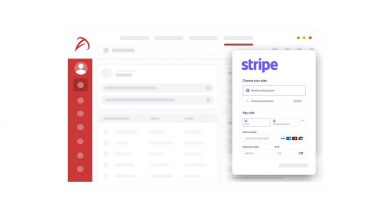The Market Opportunity for Microsoft Security Partners: Leveraging the Secure Future Initiative
The initiative, detailed in its first progress report released in September 2024, not only underscores Microsoft’s dedication to a "security-first" ethos but also presents a significant market opportunity for its security partners.
 As cybersecurity threats continue to escalate in scale, sophistication, and impact, organizations worldwide are seeking robust solutions to safeguard their digital ecosystems.
As cybersecurity threats continue to escalate in scale, sophistication, and impact, organizations worldwide are seeking robust solutions to safeguard their digital ecosystems.
Microsoft, a global leader in technology, has positioned itself at the forefront of this battle with its Secure Future Initiative (SFI), a multi-year commitment launched in November 2023 to enhance security across its products, services, and operations.
The initiative, detailed in its first progress report released in September 2024, not only underscores Microsoft’s dedication to a “security-first” ethos but also presents a significant market opportunity for its security partners.
The Secure Future Initiative: A Blueprint for Security Transformation
Microsoft’s SFI is a response to the growing intensity of cyberattacks, including high-profile incidents like the 2023 Storm-0558 breach and the 2024 Midnight Blizzard attack, which exposed vulnerabilities in Microsoft’s infrastructure and prompted a reevaluation of its security culture.
The initiative is built on three core principles—secure by design, secure by default, and secure operations—and is guided by six key pillars: protecting identities and secrets, securing tenants and isolating production systems, safeguarding networks, securing engineering practices, monitoring and detecting threats, and accelerating response and remediation.
The September 2024 SFI Progress Report highlights tangible advancements. Microsoft has mobilized the equivalent of 34,000 full-time engineers—making it the largest cybersecurity engineering effort in its history.
Key achievements include updating Microsoft Entra ID and Microsoft Account (MSA) systems to use Azure-managed hardware security modules (HSMs) for key management, eliminating 5.75 million inactive tenants to reduce attack surfaces, and achieving over 99% tracking of physical network assets in a centralized inventory. These efforts reflect a seismic shift in Microsoft’s approach, prioritizing security as a foundational element rather than an add-on feature.
For Microsoft Security partners—ranging from managed security service providers (MSSPs) to system integrators and independent software vendors (ISVs)—the SFI represents both a strategic roadmap and a market catalyst. By aligning with Microsoft’s security transformation, partners can tap into a multi-billion-dollar opportunity driven by enterprise demand for comprehensive, integrated cybersecurity solutions.
Market Drivers: Why the Opportunity is Ripe
The cybersecurity market is projected to grow significantly, with estimates suggesting it could reach $10 trillion in annual economic losses due to cybercrime by 2025, as noted by Microsoft’s Executive Vice President for Security, Charlie Bell, in a 2023 WIRED interview.
This alarming statistic underscores the urgency for organizations to invest in advanced security measures. Microsoft’s vast ecosystem—spanning cloud services (Azure), productivity tools (Microsoft 365), and identity management (Entra ID)—positions it as a linchpin in global IT infrastructure, amplifying the demand for its security offerings.
The SFI amplifies this demand by committing Microsoft to transparent, industry-leading security practices. For instance, the initiative’s focus on reducing cloud vulnerability mitigation times by 50% and publishing Common Vulnerabilities and Exposures (CVEs) even when no customer action is required signals a proactive stance that resonates with enterprises seeking reliable partners.
Additionally, Microsoft’s integration of AI-driven defenses and its shift to memory-safe languages like Rust (backed by a $1 million donation to the Rust Foundation in 2023) align with emerging trends in secure software development, further enhancing its appeal.
For partners, this creates a dual opportunity: consulting and implementation services to help customers adopt Microsoft’s enhanced security features, and value-added solutions that build on Microsoft’s platform to address niche or industry-specific threats. The SFI’s emphasis on collaboration—evidenced by Microsoft’s support for the U.S. Cybersecurity and Infrastructure Security Agency’s (CISA) Secure by Design pledge—also opens doors for partners to co-develop solutions and influence industry standards.
Strategic Opportunities for Microsoft Security Partners
Identity and Access Management (IAM) Solutions
The SFI’s first pillar, protecting identities and secrets, addresses a critical pain point—credential theft remains a top attack vector. Microsoft’s updates to Entra ID, such as automatic key rotation via Azure-managed HSMs and phishing-resistant multifactor authentication (MFA) for 100% of its user accounts, provide a robust foundation.
Partners can offer implementation services to migrate customers to these secure identity systems, develop custom integrations using Microsoft’s standard identity SDKs (now covering over 73% of tokens issued by Entra ID for Microsoft applications), or create managed services to monitor and optimize IAM deployments.
Cloud Security and Tenant Management
The elimination of 5.75 million inactive tenants and the completion of app lifecycle management for 730,000 unused apps demonstrate Microsoft’s commitment to reducing attack surfaces in the cloud.
Partners can capitalize by offering tenant hygiene assessments, cloud security posture management (CSPM) tools, and managed services to ensure customers maintain secure configurations aligned with SFI standards. This is particularly relevant for industries like finance and healthcare, where regulatory compliance demands rigorous cloud governance.
Network Security Enhancements
With over 99% of Microsoft’s physical network assets tracked and monitored for firmware compliance, partners can extend this capability to customers by integrating Microsoft’s centralized inventory approach with third-party network security tools. Opportunities include developing solutions for real-time network monitoring, firmware vulnerability management, and secure access controls tailored to hybrid and multi-cloud environments.
Secure Development and DevSecOps
The SFI’s focus on secure engineering practices—such as deploying CodeQL for static analysis across all commercial products—offers partners a chance to upskill in DevSecOps and assist customers in adopting Microsoft’s dynamic Security Development Lifecycle (dSDL). Partners can provide training, consulting, or custom tools to integrate security into software development pipelines, leveraging Microsoft’s advancements in AI-driven code analysis and memory-safe programming.
Threat Detection and Response
Microsoft’s investments in monitoring and threat detection, coupled with its goal to accelerate vulnerability response, create a fertile ground for MSSPs and incident response providers. Partners can build managed detection and response (MDR) offerings using Microsoft Sentinel, enhanced by SFI-driven improvements in audit log retention (now a minimum of two years) and threat intelligence. This is a high-growth area, as organizations increasingly outsource security operations to cope with sophisticated threats.
Competitive Advantage for Partners
Aligning with the SFI gives partners a competitive edge in several ways. First, Microsoft’s scale—serving over 860,000 security customers worldwide as of 2023—provides partners with access to a vast market.
Second, the initiative’s transparency and measurable progress (e.g., 34,000 engineers, specific milestones like tenant cleanup) bolster partners’ credibility when pitching Microsoft-based solutions. Third, Microsoft’s ecosystem of over 15,000 security partners enables collaboration and co-innovation, allowing smaller firms to punch above their weight by integrating with larger players or Microsoft’s own tools.
Moreover, the SFI’s cultural shift—tying security to employee performance reviews and senior leadership compensation—signals to customers that Microsoft is serious about accountability. Partners can mirror this commitment by adopting similar internal practices, enhancing their reputation as trusted advisors.
Conclusion: A Future-Proof Partnership
While the opportunity is substantial, partners must navigate challenges. The complexity of Microsoft’s ecosystem requires deep expertise, particularly in areas like Entra ID or Azure governance, which may necessitate significant training investments. Competition is also fierce, as other cloud giants like AWS and Google bolster their security offerings. Additionally, partners must stay ahead of evolving threats, ensuring their solutions complement Microsoft’s SFI-driven advancements rather than lag behind.
The Microsoft Secure Future Initiative is more than a corporate overhaul—it’s a clarion call for the cybersecurity industry to elevate its game. For Microsoft Security partners, it’s a golden opportunity to align with a titan that’s redefining security standards while addressing a market desperate for reliable, scalable solutions.
By leveraging the SFI’s progress—whether through IAM expertise, cloud security services, or advanced threat detection—partners can unlock new revenue streams, strengthen customer trust, and position themselves as leaders in a $10 trillion threat landscape. As Microsoft continues to evolve the SFI, partners who act decisively will not only ride the wave of this transformation but also help shape the secure digital future.



